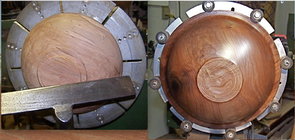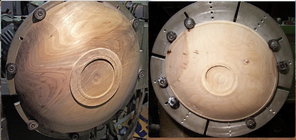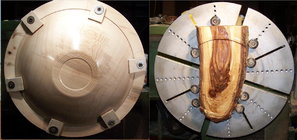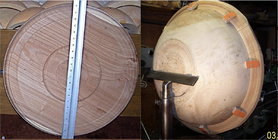Hi, I have had several situations where I have a jam chuck that messes up my project. I'm basically using just a cylinder of wood that I put in the chuck then put against the inside of the bowl sometimes/most times with a paper towel in between. Bring the tail stock in and that holds it in place while I turn off a tenon. However, some of the time, or most of the time, when I take it off there's a black ring where the block was touching the bowl. Sometimes I get a catch and it stalls the bowl while the block keeps turning. Some times I don't and I still get it. One solution would be to just tighten up the tailstock till it can't turn, but I fear putting a dent in the bowl. It may be the case that the solution is to find the right pressure and never get a catch, which would be a crappy solution but I get it. I guess I'm wondering how others do it, and if others have experienced this and over come it.
Thanks,
Raif
Thanks,
Raif





